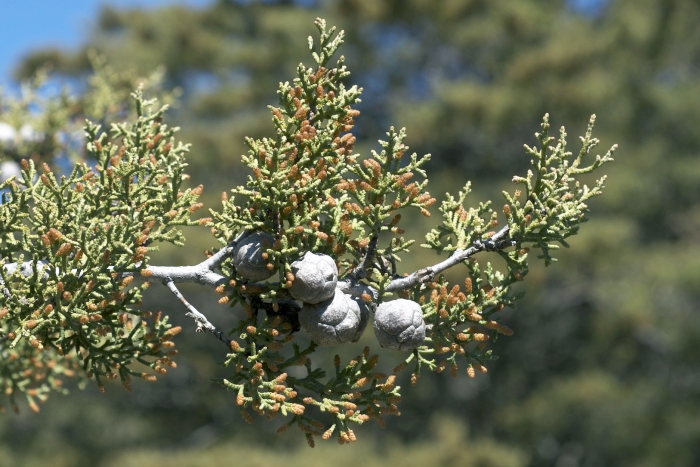Sargent’s Cypress
(Cupressus sargentii)
Sargent’s Cypress (Cupressus sargentii)
/
/

Eric in SF
CC BY-SA 3.0
Image By:
Eric in SF
Recorded By:
Copyright:
CC BY-SA 3.0
Copyright Notice:
Photo by: Eric in SF | License Type: CC BY-SA 3.0 | License URL: https://creativecommons.org/licenses/by-sa/3.0 | Uploader: MPF | Publisher: Wikimedia Commons | Title: Cupressus_sargentii.jpg | Notes: {{Information |Description= Feuilles de Cyclamen clicium |Source= Photo reçue gracieusement d'une cyclaminophile |Date= 27-sep-2007 |Author= Meneerke bloem |Permission= Libre de droits |other_versions= }} |











































Estimated Native Range
Summary
Cupressus sargentii, commonly known as Sargent’s Cypress, is an evergreen conifer native to the coastal and interior mountains of California, particularly within the chaparral and serpentine soils where it thrives in harsh conditions. It typically grows to a height of 20-30 feet (6-9 meters) and a width of up to 5 feet (1.5 meters), with a conical to columnar growth habit. The foliage is blue-green, with scale-like leaves that can provide dense coverage. Sargent’s Cypress is not known for showy flowers but does produce small, round cones that add to its ornamental value.
Sargent’s Cypress is valued for its drought tolerance and adaptability to poor soils, making it suitable for xeriscaping and as a windbreak in arid landscapes. It is also used for reforestation and habitat restoration projects. In cultivation, it requires minimal maintenance once established, thriving in full sun and well-drained soils. It is less commonly used in urban settings due to its specific soil requirements and slower growth rate. Gardeners should be aware that it can be susceptible to cypress canker disease, which can lead to branch dieback and, in severe cases, tree death.CC BY-SA 4.0
Sargent’s Cypress is valued for its drought tolerance and adaptability to poor soils, making it suitable for xeriscaping and as a windbreak in arid landscapes. It is also used for reforestation and habitat restoration projects. In cultivation, it requires minimal maintenance once established, thriving in full sun and well-drained soils. It is less commonly used in urban settings due to its specific soil requirements and slower growth rate. Gardeners should be aware that it can be susceptible to cypress canker disease, which can lead to branch dieback and, in severe cases, tree death.CC BY-SA 4.0
Plant Description
- Plant Type: Tree
- Height: 20-30 feet
- Width: 3-5 feet
- Growth Rate: Moderate
- Flower Color: N/A
- Flowering Season: Non-Flowering
- Leaf Retention: Evergreen
Growth Requirements
- Sun: Full Sun
- Water: Low
- Drainage: Fast
Common Uses
Bird Garden, Drought Tolerant, Fragrant, Low Maintenance
Natural Habitat
Native to the coastal and interior mountains of California, particularly within the chaparral and serpentine soils
Other Names
Common Names: Sargent Cypress, Sargents Zypresse, Cyprès De Sargent, Cipresso Di Sargent
Scientific Names: , Hesperocyparis sargentii, Cupressus sargentii, Cupressus sargentii var. duttonii, Callitropsis sargentii, Cupressus goveniana var. sargentii, Neocupressus sargentii,
GBIF Accepted Name: Cupressus sargentii Jeps.